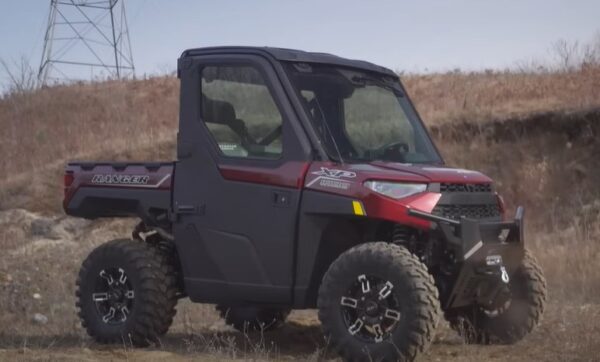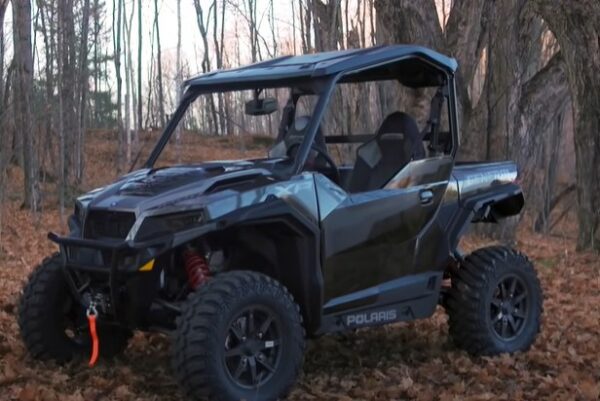Owning an Arctic Cat Wildcat 1000 is a great way to enjoy off-roading, but even the best vehicles have their issues.
While most of these problems are minor and can be fixed easily, some require more attention and knowledge.
To help you out, we’ve compiled a list of common issues that owners of the Arctic Cat Wildcat 1000 encounter, along with possible solutions for each one.
Read on to find out what they are and how to fix them.
Arctic Cat Wildcat 1000 Problems


1. Starter Problem
Strater Problem in the Arctic Cat Wildcat 1000 is a common issue that can cause your engine to not start.
This is usually caused by a weak or dead battery, corroded wiring, or faulty starter solenoid.
In order to diagnose and repair this issue, you will need to check the battery’s voltage with a voltmeter, inspect the wiring for corrosion, and test the starter solenoid.
Once you have identified which component is causing the issue, you can replace or repair it to get your engine running again.
2. Shifting Issue
The shifting issue with the Arctic Cat Wildcat 1000 is a common problem that can be caused by several different underlying factors.
One of the most common issues is wear and tear to the shift linkage components, such as bearings, bushings, and seals.
If these parts are worn out, it can cause them to become misaligned or even break, resulting in a shifting issue. Another potential cause is improper maintenance of the transmission fluid.
The fluid should be regularly checked and changed if necessary to ensure proper shifting performance. If the transmission fluid is too low or dirty, it can also lead to shifting problems.
It’s important to maintain your Arctic Cat Wildcat 1000 regularly and address any potential issues as soon as they arise to prevent further damage.
3. Electrical Issues
Electrical issues are one of the most common problems encountered with the Arctic Cat Wildcat 1000.
Many owners have reported that their machine will suddenly stop running, or the electrical system will simply not turn on at all.
This could be due to faulty wiring, incorrect connections, a blown fuse, or even a damaged relay.
It is important to check all of these components when troubleshooting any electrical issue with the Arctic Cat Wildcat 1000.
Taking it to a professional mechanic or dealer may be necessary in order to correctly diagnose and fix the problem
4. Clutch Problems
Clutch problems on the Arctic Cat Wildcat 1000 can be caused by a variety of factors, including wear and tear of the clutch components, improper lubrication, or lack of maintenance.
Clutches are designed to work in a specific way, allowing an engine to transfer power from one shaft to another while maintaining control over engine torque and speed.
If any of these components become worn or dirty, the clutch can fail to operate correctly and cause additional issues.
Common problems associated with clutch failure include slipping and jerking during acceleration, difficulty shifting gears, the decreased performance of the vehicle, and an overall decrease in power delivery from the engine.
If any of these symptoms are present, the clutch should be inspected and serviced as soon as possible.
This can help to prevent more serious damage from occurring and ensure that your vehicle will continue to perform at its best.
Services might include adjusting the clutch cable or replacing the clutch plate if it is worn or damaged beyond repair.
5. Engine Stalling
Engine stalling can be an exasperating problem that afflicts Arctic Cat Wildcat 1000s. It is often caused by an engine misfire or insufficient fuel delivery, resulting from clogged fuel injectors or a malfunctioning fuel pump.
It can also occur due to air leaks in the intake system, vacuum leaks, or a dirty throttle body. These issues can be difficult to diagnose without the help of a professional mechanic or diagnostic tool.
If your Wildcat 1000 is suffering from engine stalling, it’s best to get it checked out quickly to ensure that the issue doesn’t become more serious.
If you’re experiencing engine stalling in your Arctic Cat Wildcat 1000, contact a certified technician and have them check the fuel system, air intake system, and vacuum lines.
They’ll be able to identify the cause of the stalling and rectify the problem accordingly. It’s also important to replace any worn or damaged parts as soon as possible, to prevent further damage from occurring.
6. Poor Fuel Economy
Poor fuel economy is a common problem faced by owners of the Arctic Cat Wildcat 1000.
This issue may be due to a variety of factors, including a malfunctioning fuel pump, dirty air filter, clogged fuel lines, incorrect carburetor settings, or worn spark plugs.
Besides, it could be caused by low-quality gasoline that does not have the correct octane rating for the Wildcat 1000. To improve fuel economy, it is important to regularly check and replace components that may be causing the issue.
Also, when using gasoline in your Wildcat 1000, make sure it is of high quality and has the correct octane rating.
With proper maintenance and attention to detail, owners can ensure their Arctic Cat Wildcat 1000 runs at peak performance and get the best possible fuel economy.
7. Power Steering Problems
Power steering problems are a common issue for the Arctic Cat Wildcat 1000. The power steering system works by using hydraulic pressure to assist with turning the wheel, making it much easier to maneuver and turn sharp corners.
Unfortunately, the power steering can start to malfunction due to dirt and debris clogging up the hoses, loose or worn parts, or a fluid leak.
If you experience any difficulty when turning the wheel, it’s best to have a qualified mechanic inspect your power steering system for potential issues.
Replacing the power steering fluid regularly can also help to prevent any problems from arising due to dirt or debris buildup.
Regular maintenance and inspection of the power steering system is key to keeping your Arctic Cat Wildcat 1000 running smoothly.
8. Contact Customer Service
If you have a problem with your Arctic Cat Wildcat 1000, you can contact Customer Service. They will help answer questions and solve any problems. Customer Service can be reached by phone or email.
They also have a website with a live chat feature where you can ask questions and get help quickly.
Technical specifications for the Arctic Cat Wildcat 1000:
| Specification | Description |
|---|---|
| Engine Type | 4-Stroke, Twin Cylinder |
| Displacement | 951cc |
| Horsepower | 95 HP |
| Cooling System | Liquid-Cooled |
| Fuel System | Electronic Fuel Injection (EFI) |
| Transmission | Team Rapid Response Clutch (CVT) |
| Drive System | 2WD/4WD with Electric Front Differential Lock |
| Front Suspension | Double A-Arm with 17 inches of Travel |
| Rear Suspension | 5-Link Trailing Arm with 18 inches of Travel |
| Front Brake Type | Hydraulic Disc |
| Rear Brake Type | Hydraulic Disc |
| Front Tires | 27 x 9-14 |
| Rear Tires | 27 x 11-14 |
| Overall Length | 130 inches |
| Overall Width | 64 inches |
| Overall Height | 66 inches |
| Ground Clearance | 13 inches |
| Wheelbase | 95 inches |
| Dry Weight | 1,395 lbs |
| Fuel Capacity | 8.8 gallons |
| Cargo Box Capacity | 300 lbs |
| Towing Capacity | 2,000 lbs |
Conclusion
The Arctic Cat Wildcat 1000 is a great choice for those who want an off-road vehicle that can handle any terrain.
While it does have some common problems such as oil leaks and carburetor issues, these are relatively easy to fix with regular maintenance. With proper care, you should be able to enjoy your Wildcat 1000 for years to come.
If you’re looking for a reliable ATV that will provide countless hours of fun on the trails or in the dunes, look no further than the Arctic Cat Wildcat 1000!
FAQs
How fast does an Arctic Cat Wildcat 1000 go?
The Arctic Cat Wildcat 1000 is a high-performance side-by-side vehicle capable of reaching speeds up to 74 mph, depending on the model and conditions.
It also features an advanced yet user-friendly Dynamic Power Steering system that gives riders consistent steering at all speeds for added control on any terrain.
What size engine is in the Arctic Cat Wildcat?
The Arctic Cat Wildcat 1000 is equipped with an industry-leading 999cc 4-Stroke SOHC Twin Cylinder engine, giving it plenty of power to take on the toughest challenges.
This robust engine offers up to 115 HP and 75 lbs.-ft. of torque, combined with a lightweight design that makes it perfect for navigating tight spaces.
Does 2012 Arctic Cat Wildcat 1000 have power steering?
The 2012 Arctic Cat Wildcat 1000 is equipped with a power steering system that helps the driver control the vehicle more easily.
This system works by using a hydraulic pump and cylinder to provide assistance to the driver when turning, which helps reduce fatigue and provides greater maneuverability on difficult terrain.
Is Arctic Cat a Suzuki engine?
No, Arctic Cat Wildcat 1000 does not use a Suzuki engine. It features a 951cc 4-stroke SOHC V-Twin engine with electronic fuel injection and liquid cooling.
This powerful engine is capable of producing up to 82 horsepower and an impressive top speed of 65mph.
Arctic Cat Prowler 700 Xtx Problems
Arctic Cat Wildcat 700 Problem
Arctic Cat Alterra 700 Problems


I’m Harvey, and I know everything there is to know about offroad vehicles. I’ve been driving them since I was a kid, and I love nothing more than exploring the great outdoors in my Jeep, ATV or UTV. I grew up in a small town in Idaho, and that’s where my love for offroad vehicles started. There were no paved roads where I lived, so we had to drive on dirt trails to get around. And that’s when I fell in love with the thrill of being able to go anywhere I wanted, no matter how rough the terrain was. LinkedIn | Instagram



